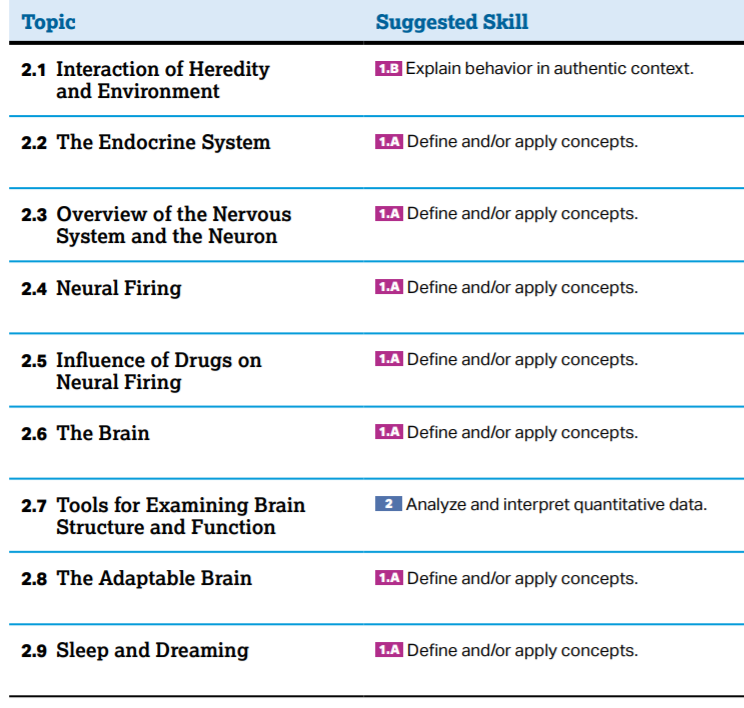AssignmentsRequests from outside of my district will be denied.
Presentations
Helpful LinksVideos
|
Unit 2: Biological Bases of Behavior
AP Exam Weighting: 8-10% The structures of human biological systems and their functions influence our behavior and mental processes. Some psychologists study behaviors and mental processes from a biological perspective. This includes an examination of the influence that the interaction between human biology and our environment has on behavior and mental processes. This is a recurring topic throughout the course that will be used to explain many psychological phenomena. The biological perspective also provides insight into the causes of and treatments for psychological disorders. There is a complex interaction between a person’s biology and their behavior and mental processes. Heredity and environment play a role, as do variations in a person’s consciousness. Unit 2 focuses on blending knowledge about physiological processes and psychology to provide better explanations of behavior and mental processes. This course teaches students how biological and anatomical structures play an active role in an individual’s mental and behavioral development. To demonstrate an understanding of these biological bases of psychology, students should describe the concept or apply it to a scenario. As students learn to describe this blended physiological and psychological knowledge, they should be able to apply it to behavior and mental processes in other fields of psychology (e.g., memory, learning, development, and social psychology). This approach will help students understand how psychological theories, schools of thought, and perspectives were developed. Students will also continue to build on their understanding of the appropriate use of research methods and designs from Unit 1. Preparing for the AP Exam: Students often struggle with knowing which neurotransmitters function with which biological processes and how those functions relate to behavior and mental processes. Teachers can give students opportunities to map the neurotransmitter pathways and describe outcomes in both successful and disrupted transmission. Students will also benefit from many opportunities to connect psychological processes to an individual’s physiology. They often struggle to make accurate and complete connections between anatomy and physiology as it relates to behavior and mental processes. If a question asks students to give an explanation, they would need to provide an answer in terms of evidence and/or reasoning. |
